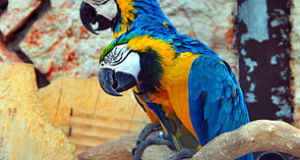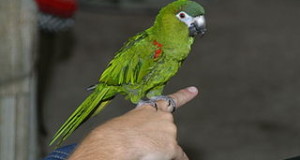Bird-keeping is a most enjoyable hobby, and becomes a passion for many, but there’s no denying that expenses can add up. Following are some simple ways to cut costs.
Cage and Furnishings
Your bird’s home is likely to be your biggest one-time cash outlay. A number of beautiful cages and outdoor aviaries are available, but building your own cage, or hiring someone to do so, may be a cheaper option. Creating a bird room within your home might also save money, especially for those who keep large parrots, macaws or colony-dwelling doves and finches.
Well-washed fruit tree branches make excellent substitutes for commercial perches, especially for those parrots that destroy any and all wood within reach. Another benefit of using natural perches is that you can easily provide your bird with a variety of perch widths and textures; this will help keep the feet in good shape. Avoid collecting branches from areas sprayed with pesticides.
Food
Many finches and softbills do best when regularly supplied with insects; large quantities are essential for most species during the breeding season. Collecting insects will provide important dietary variety at little or no cost (please see article below).
Also consider setting up a mealworm colony…not only can you breed all the grubs you’ll need, but you’ll also be able to select newly-molted individuals and the pupae, which are more nutritious than other lifer stages. A colony will also ensure a supply of tiny mealworms for small species and nestlings.
Gardening for birds is enjoyable and cost-effective, and will allow you to provide your pets with important nutrients that are otherwise hard to find. Consider also sprouting seeds at home.
Toys
From pine cones to piles of dead leaves, nature provides an infinite variety of materials that can be used to keep your pets active and interested in their environments. You can also use a variety of free and inexpensive items to create your own toys (please see video below).
Heat
 Heating your bird’s cage or room may, in some cases, be more effective and less expensive than warming the entire house or apartment. This is especially true for those who keep cold sensitive species in regions experiencing severe winter weather. Please see the article below for some useful ideas and products.
Heating your bird’s cage or room may, in some cases, be more effective and less expensive than warming the entire house or apartment. This is especially true for those who keep cold sensitive species in regions experiencing severe winter weather. Please see the article below for some useful ideas and products.
Full Spectrum Light
UVA and UVB radiation seem to play an important role in bird health and breeding success, and in encouraging natural behaviors. Full spectrum bulbs designed specifically for birds are available, but nothing beats exposure to natural sunlight (take precautions, of course, to ensure your pet’s safety). Glass and plastic filter-out beneficial UV rays, so you’ll need to keep your bird outdoors or in a screened sun room when utilizing natural sunlight.
Further Reading
Video: making parrot toys
 That Bird Blog – Bird Care and History for Pet Birds
That Bird Blog – Bird Care and History for Pet Birds




My budgie, Chubbs, loves toilet paper tubes. I cut them into one inch rings, and loop them over her perches, and she has tons of fun destroying them. Occasionally, as a special treat, I coat the with a VERY thin layer of peanut butter and roll them in seeds and treats. I seem to have gotten lucky with her; without fail, if I spend more than $5 on a toy, she’ll want absolutely nothing to do with it. The most expensive toy she has is a $4 on the has several drawers for her to open to get to her treats.
Hello Alicia, Frank Indiviglio here.
Thanks for the most interesting post..thanks for the great idea, I’m sure others will benefit. I used the same for smaller birds at the Bronx Zoo, and also for rodents of all types – very versatile and a wasted resource, I think. In fact, we also used TP rolls as a substrate to rear roaches and crickets (food animals for others) – lots of surface area and great hiding spots!
Good luck, enjoy and please keep the ideas coming,
Best regards, Frank Indiviglio.